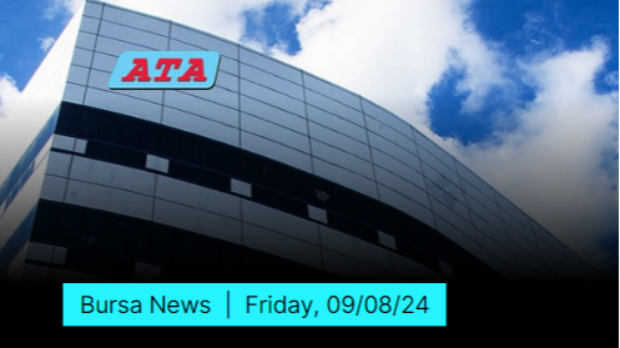US students take to social media to share stories of racism
Tan KW
Publish date: Fri, 31 Jul 2020, 12:10 PM
A Black girl overheard classmates say her suburban school was becoming “ghetto” because more students who look like her had enrolled.
A Muslim child was called a terrorist in third grade.
Asian students were mocked in the cafeteria for their ethnic meals and the shape of their eyes.
The students who received these messages say they aren’t surprised by the experiences of fellow students at their schools.
But they are surprised at how quickly the stories piled up on the Instagram accounts they created to allow students to anonymously share their stories of discrimination. And they called those stories “jarring” and “heartbreaking”.
“A lot of students are taking solace in the fact that they're not the only one going through these things,” said the teen who created the “Dear Dublin City Schools” account. “As we started posting more and more, many of the submissions started to say ‘Until I started reading these stories, I thought I was the only one’.”
While the large protests against racial inequality have largely dispersed downtown, students in central Ohio and across the US are keeping the conversation alive on Instagram. They hope the revelations will spur administrators and educators to take action to stop systemic racism in schools.
Three high school students who manage local accounts spoke with a Dispatch reporter by phone. They requested that their names not be published for fear of retaliation, as well as that it might jeopardise the accounts.
For about a month, the students have served as gatekeepers, reviewing hundreds of anonymous submissions and posting many publicly. Sometimes they remove a specific teacher’s name to avoid legal trouble or add a warning to posts that address sensitive topics. They also wade through the occasional spam or mocking message and make tough calls, such as whether a story veers too much from the subject of discrimination.
“It’s a huge responsibility that I take very seriously,” the Dublin student said. “We’re providing a microphone for people to share their stories, and for a lot of people, this is the first time they’ve felt comfortable enough to share them. It’s hard to decide what to post and what not to post and to sort through what is genuine.”
Many of the stories detail experiences with racial microaggressions, or “brief statements or behaviours that, intentionally or not, communicate a negative message about a non-dominant group”, as defined in a 2015 study in the journal Educational Researcher about their impact in educational settings. The researchers observed microaggressions in 30% of 60 diverse classrooms on three community college campuses in the New York City area, most frequently delivered by instructors.
Although most microaggression research focuses on adults, there is ample evidence that students of all ages may experience microaggressions from other students, adults in school, and through the school environment, according to the US National Association of School Psychologists.
Parul Jain, an associate professor in Ohio University’s E.W. Scripps School of Journalism who is teaching a class on global social media movements, said what’s happening in central Ohio isn’t unprecedented. Technology has given teens the means to reach a large audience while bypassing traditional media channels, where older gatekeepers might dismiss their concerns.
“They’re just done with the system,” Jain said.
Many posts said students had reported issues to school officials with no results, or hadn’t bothered because they feared retaliation or that they wouldn’t be taken seriously.
“You try to speak up about the kind of mistreatment you face because of things you can’t control, but it feels like nothing is there to back you up,” said one student who manages the “Dear Worthington City Schools” Instagram account.
Though anonymity can make people feel comfortable enough to come forward, it can also be a double-edged sword, Jain said.
For example, critics can question the authenticity of the posts.
Some central Ohio school administrators have said it’s difficult to take action about specific cases because of the anonymous nature of the accounts.
But that doesn’t mean the students’ shared experiences should be dismissed, Jain said, especially if the posts communicate a pattern.
“Yes, they may be anonymous accounts, but there are people behind them,” Jain said. “You don’t always need to know who is saying what, as long as the thing they’re saying is important and could make a difference.”
Some teachers have also submitted anonymous posts of support.
“So many of your teachers have read your stories. The memories you have shared broke our hearts,” reads a post from an account associated with Hilliard City Schools. “We hear you loud and clear and we see we need to do better.”
The Hilliard school district formed a 20-person inclusivity and justice task force in mid-June. It meets weekly and will present recommendations for action to the school board, spokeswoman Stacie Raterman said.
Worthington schools spokeswoman Vicki Gnezda said the district is in the process of hiring a coordinator of diversity, equity and inclusion and is planning to host “listening sessions” when students return to classes in person.
“We have read every one of the posts and care deeply about all of our students’ experiences,” she said in an emailed statement.
Dublin City Schools Superintendent Todd Hoadley addressed the accounts at a recent school board meeting. The district plans to assemble a diversity and inclusion team and review its social studies curriculum and hopefully host a districtwide book talk on a common reading assignment related to the topic, he said.
“I want to thank our students for their willingness to bring those forward,” Hoadley said at a June 29 school board meeting, referencing the posts. “They’re challenging for us to read, but they’re important for us to read.”
Students who spoke with The Dispatch said they hope additional action will come, such as hiring more diverse staff and ensuring that students can report concerns to their schools with resolutions.
“It’s a good step forward,” said a second student who oversees the Worthington account. “But we want to see a concrete plan and concrete steps of how they’re going to hold themselves accountable.”
- TNS
More articles on Future Tech
Created by Tan KW | Aug 15, 2024
Created by Tan KW | Aug 15, 2024
Created by Tan KW | Aug 15, 2024
Created by Tan KW | Aug 15, 2024
Created by Tan KW | Aug 15, 2024










.png)










